The effect of environmental conditions on biofilm formation of Burkholderia pseudomallei clinical isolates
- PMID: 22970167
- PMCID: PMC3435415
- DOI: 10.1371/journal.pone.0044104
The effect of environmental conditions on biofilm formation of Burkholderia pseudomallei clinical isolates
Abstract
Burkholderia pseudomallei, a Gram-negative saprophytic bacterium, is the causative agent of the potentially fatal melioidosis disease in humans. In this study, environmental parameters including temperature, nutrient content, pH and the presence of glucose were shown to play a role in in vitro biofilm formation by 28 B. pseudomallei clinical isolates, including four isolates with large colony variants (LCVs) and small colony variants (SCVs) morphotypes. Enhanced biofilm formation was observed when the isolates were tested in LB medium, at 30 °C, at pH 7.2, and in the presence of as little as 2 mM glucose respectively. It was also shown that all SVCs displayed significantly greater capacity to form biofilms than the corresponding LCVs when cultured in LB at 37 °C. In addition, octanoyl-homoserine lactone (C(8)-HSL), a quorum sensing molecule, was identified by mass spectrometry analysis in bacterial isolates referred to as LCV CTH, LCV VIT, SCV TOM, SCV CTH, 1 and 3, and the presence of other AHL's with higher masses; decanoyl-homoserine lactone (C(10)-HSL) and dodecanoyl-homoserine lactone (C(12)-HSL) were also found in all tested strain in this study. Last but not least, we had successfully acquired two Bacillus sp. soil isolates, termed KW and SA respectively, which possessed strong AHLs degradation activity. Biofilm formation of B. pseudomallei isolates was significantly decreased after treated with culture supernatants of KW and SA strains, demonstrating that AHLs may play a role in B. pseudomallei biofilm formation.
Conflict of interest statement
Figures
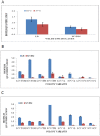
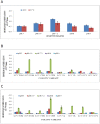
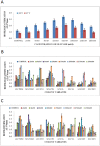





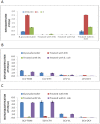
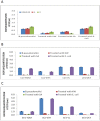
Similar articles
-
N-Octanoylhomoserine lactone signalling mediated by the BpsI-BpsR quorum sensing system plays a major role in biofilm formation of Burkholderia pseudomallei.Microbiology (Reading). 2011 Apr;157(Pt 4):1176-1186. doi: 10.1099/mic.0.046540-0. Epub 2011 Jan 20. Microbiology (Reading). 2011. PMID: 21252275
-
Quorum sensing regulates dpsA and the oxidative stress response in Burkholderia pseudomallei.Microbiology (Reading). 2006 Dec;152(Pt 12):3651-3659. doi: 10.1099/mic.0.29226-0. Microbiology (Reading). 2006. PMID: 17159218
-
Colonial morphotypes and biofilm forming ability of Burkholderia pseudomallei.Trop Biomed. 2013 Sep;30(3):428-33. Trop Biomed. 2013. PMID: 24189672
-
Control of quorum sensing by a Burkholderia pseudomallei multidrug efflux pump.J Bacteriol. 2007 Jun;189(11):4320-4. doi: 10.1128/JB.00003-07. Epub 2007 Mar 23. J Bacteriol. 2007. PMID: 17384185 Free PMC article.
-
Biofilm Signaling, Composition and Regulation in Burkholderia pseudomallei.J Microbiol Biotechnol. 2023 Jan 28;33(1):15-27. doi: 10.4014/jmb.2207.07032. Epub 2022 Oct 17. J Microbiol Biotechnol. 2023. PMID: 36451302 Free PMC article. Review.
Cited by
-
Biofilm Formation, Production of Matrix Compounds and Biosorption of Copper, Nickel and Lead by Different Bacterial Strains.Front Microbiol. 2021 Jun 10;12:615113. doi: 10.3389/fmicb.2021.615113. eCollection 2021. Front Microbiol. 2021. PMID: 34177820 Free PMC article.
-
Impact of Nutrient Restriction on the Structure of Listeria monocytogenes Biofilm Grown in a Microfluidic System.Front Microbiol. 2017 May 17;8:864. doi: 10.3389/fmicb.2017.00864. eCollection 2017. Front Microbiol. 2017. PMID: 28567031 Free PMC article.
-
Influence of Selected Factors on Biofilm Formation by Salmonella enterica Strains.Microorganisms. 2020 Dec 25;9(1):43. doi: 10.3390/microorganisms9010043. Microorganisms. 2020. PMID: 33375734 Free PMC article.
-
Experimental Persistent Infection of BALB/c Mice with Small-Colony Variants of Burkholderia pseudomallei Leads to Concurrent Upregulation of PD-1 on T Cells and Skewed Th1 and Th17 Responses.PLoS Negl Trop Dis. 2016 Mar 14;10(3):e0004503. doi: 10.1371/journal.pntd.0004503. eCollection 2016 Mar. PLoS Negl Trop Dis. 2016. PMID: 26974441 Free PMC article.
-
Burkholderia pseudomallei Biofilm Promotes Adhesion, Internalization and Stimulates Proinflammatory Cytokines in Human Epithelial A549 Cells.PLoS One. 2016 Aug 16;11(8):e0160741. doi: 10.1371/journal.pone.0160741. eCollection 2016. PLoS One. 2016. PMID: 27529172 Free PMC article.

